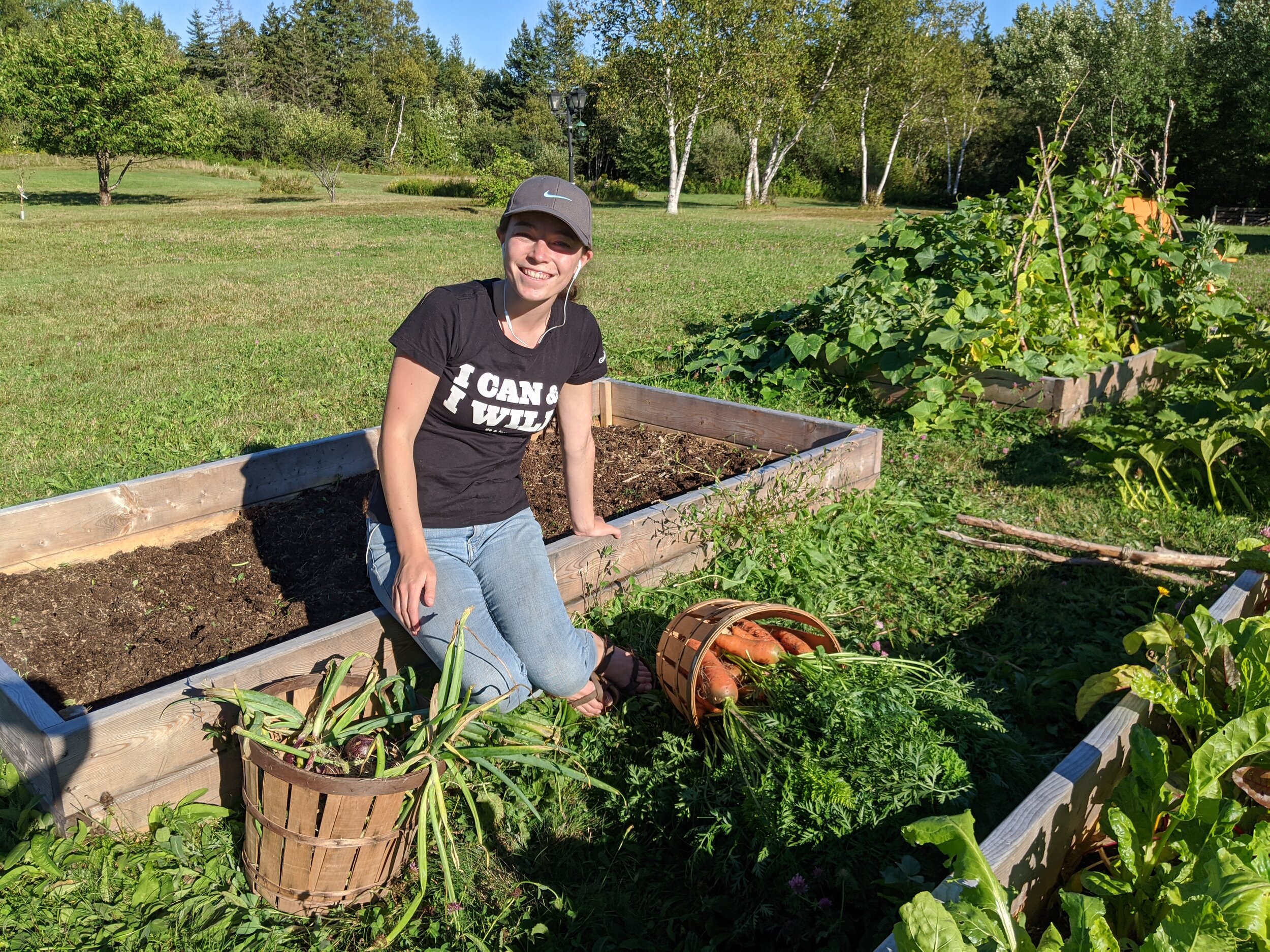Bumble Bees of Unama’ki: A Guide to Becoming a Buzzing Naturalist
Photo by Dr. David McCorquodale
By Dylan Yates, NSEN Director of Strategy and Communications
Hannah Kosick has the naturalist community in a buzz this spring with her new book “Bumble Bees of Unama’ki: A Guide to Becoming a Buzzing Naturalist”. There is no question that bumble bees play an integral role in the planet’s ecosystem, pollinating wild flowering plants that birds and small mammals rely on for food and agricultural crops. Unlike many other bees, they are able to fly in cooler temperatures and lower light levels, making them excellent pollinators.
Hannah’s book immerses readers into the life of the bumble bee with interactive quizzes, videos, and photos! Highlighting the difference between bumble bees and honey bees (an introduced species of bee that can be harmful for native bumble bee populations) and ways you can help bumble bee populations in your backyard.
Hannah is a recent graduate of Cape Breton University’s newly formed program Bachelor of Arts and Science in Environment (BASE). On top of graduating with high honours, Hannah was chosen as class valedictorian for the Spring 2021 Convocation. Growing up in Port Morien, Nova Scotia, Hannah has laid deep roots in Cape Breton volunteering with the Girl Guides of Canada for the past five years as a Ranger Guider with girls aged 15-18 and she is also an elected member of the Girl Guides of Canada – Nova Scotia Provincial council and chair of their youth forum. In 2019, Hannah was awarded a NextGen Cape Breton – Unama’ki Vital Excellence Award for her local and national environmental volunteering efforts.
“I love working with youth as I truly believe that they are incredible leaders. I love sharing my knowledge with them, but I also like taking the opportunity to learn from them as well.” – Hannah Kosick
A true believer in self reliance and reducing her environmental footprint Hannah settled down in the rural community of Albert bridge, Nova Scotia with her partner Ben, where she hopes to create a small homestead.
Photo by Ian Harte
A Guide to Becoming a Buzzing Naturalist came from Hannah’s honours thesis which she started working on in the summer of 2020 with Dr. David McCorguodale and CBU librarian Jasmine Hoover of Cape Breton University. After spending time in the field with Dave buzzing around the Bras d’Or Lake Biosphere Reserve and chatting with Jasmine about the importance of accessible and open education resources, she decided to push herself beyond the normal expectation of an undergraduate thesis and write an educational online guide to accompany her thesis.
The online guide is hosted on a platform called Pressbooks which is where CBU hosts several open, online books that professors have written for students. The guide is targeted to new naturalists from curious teenagers to retired individuals looking to learn more about nature. The book teaches readers about bumble bee lifecycles, anatomy, threats, as well as information on how to differentiate between bumble bee species and their favourite flowers. “Not to mention there are an unBEElievable amount of bumble bee puns to keep readers laughing along the way.” – Hannah Kosick
Although Hannah always liked bumble bees, she never fully appreciated them, until last summer when she saw them through Dave’s eyes. She explains them as incredibly gentle creatures and although small, they play such an important role in our everyday lives. Bumble bees pollinate a large variety of resources that we rely on to survive. Not only do they pollinate the food we eat, but also things such as cotton plants which we use to create clothing and fabrics. She is excited to welcome bees back to her garden this year.
I asked Hannah what everyday people can do to help bumble bee populations, and one of the biggest ways you can help is by not mowing your lawn. You may have heard of no mow May which is an initiative to help bees during the early months of spring. Manicured lawns cause so much harm to bumble bees as a perfectly maintained lawn means no wildflowers or ideal nesting habitat for bees. Bumble bees rely on wildflowers such as dandelions, fireweed, goldenrod, heal-all, and many others for floral resources (nectar and pollen). Where some species of bumble bees thrive in urban settings, many species of bumble bees are finding it challenging to adapt to concrete jungles. Leave it wild, refrain from raking leaves, leave the beautiful weeds, and turn your backyard into a bumble bee oasis. There is an entire chapter in the book dedicated to how you can help bees in your backyard.
Hannah is a young naturalist who is passionate, and curious about the natural world around her, she volunteers tirelessly to help educate youth, and older generations about the importance of preserving the natural world. She is headed to Memorial University of Newfoundland in St. John’s where she will be taking a Master of Science in Geography. When she returns from MUN she is hoping to get a few chickens, and expand her vegetable garden, and create a bumble bee and pollinator sanctuary on her small acreage in Albert Bridge, Nova Scotia.
Hannah is the first student to publish a book on CBU’s open textbook platform, something she is incredibly proud of, and she can’t thank Jasmine Hoover enough for giving her the idea and freedom to run with it. If you are a female considering a path in Hannah’s field, she has some words of advice. “Even today, sexism, and misogyny are present wherever and whatever you choose to study. Honestly, find yourself a female mentor and band together with other women in your field. Support and empower one another as much as you possible can because a win for one of us is a win for all of us. If you work hard and have a great backbone of support, nothing can stop you from achieving your goals. Not even haters!” – Hannah Kosick
Bumble Bees of Unama’ki is best experienced in an online format (as you can then complete quizzes, click links, and play videos). It can also be downloaded as a PDF on in epub format. You can find it all here: Bumble Bees of Unama’ki: A Guide to Becoming a Buzzing Naturalist



